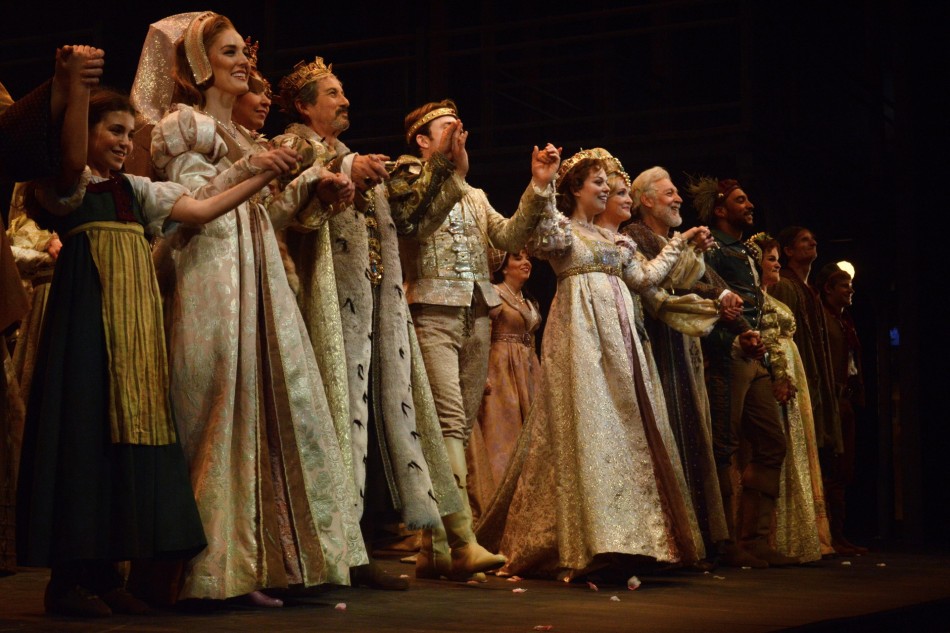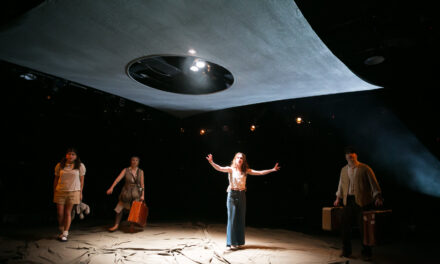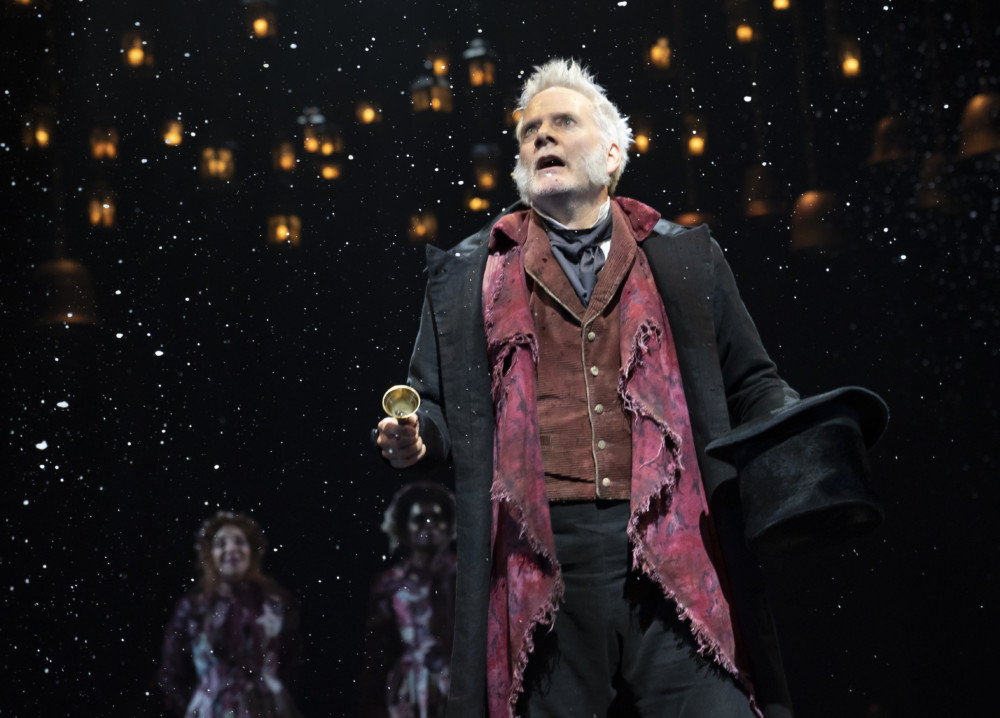Moving Women Center Stage in Bryony Lavery’s Adaptation of Treasure Island
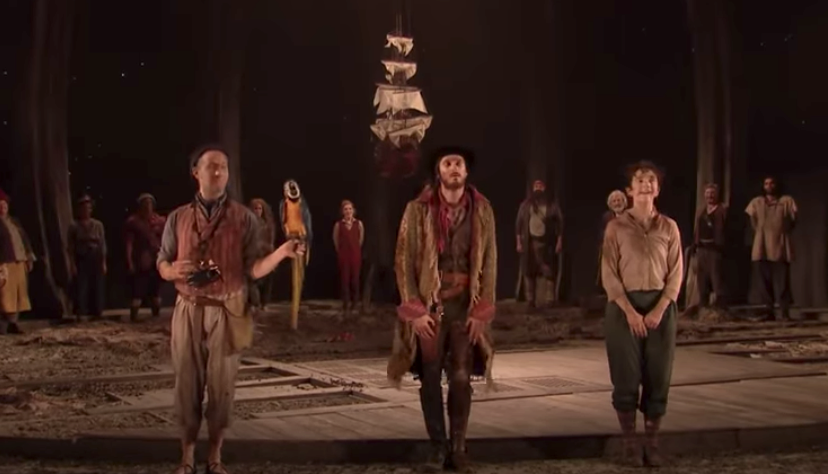
by Hazen Cuyler
In the beginning, Jim’s grandmother effortlessly lifts a treasure chest onto her shoulder. And the audience laughs. Although we imagine the riches within, we know it must be an empty box. Though mostly successful, The National Theatre’s latest online showing favors gold-plated blockbuster spectacle over authentic human interaction. Adapted by Bryony Lavery and directed by Polly Findlay, Treasure Island is free on YouTube, relatively brief and, regardless of considerable criticism, a sight to behold.
Billy Bones arrives at Jim’s grandmother’s inn. A drinker and a fighter, Bones is a treasure chest carrying pirate who wont pay rent. A slew of uninvited pirates arrive, searching for him. After surviving a stroke and several violent confrontations, Billy Bones collapses and dies. When opening his prized chest, Jim, his grandmother, Dr. Livesey and Squire Trelawney discover a map leading to buried treasure. They assemble a crew and set sail toward unimaginable fortune.
Where Robert Louis Stephenson’s classic novel contains few female characters, Bryony Lavery’s adaptation moves women center stage. The novel follows Jim, a boy, while Ms. Lavery’s adaptation follows Jim, a girl (portrayed by a commanding Patsy Ferran). Other characters follow suit- Pirates are now women, Dr. Livesey (Alexandra Maher) is a woman. In part, The National’s inclusionary decision stems from historical accuracy: female pirates existed, Stephenson simply didn’t write about them. Ms. Lavery’s additions add significant texture, complimenting an already vibrant world while never seeming out of place, awkward or detrimental.
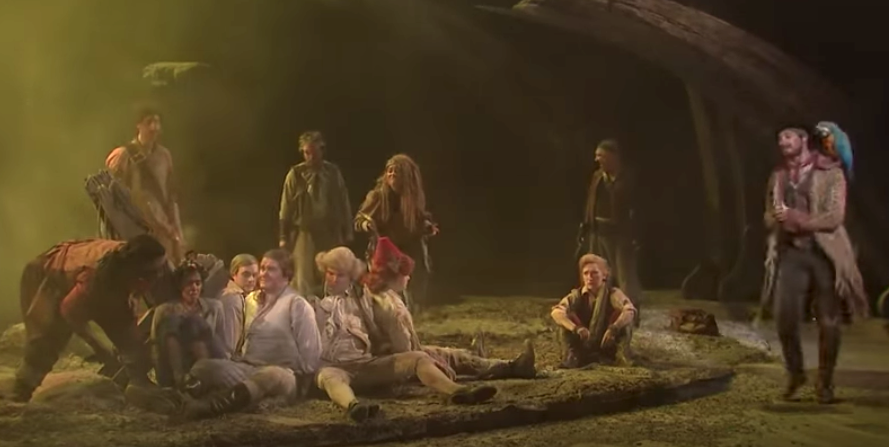

During this period of increased digital exposure, The National is clearly flexing with Lizzie Clachan’s accomplishments. Her jaw-dropping set is Treasure Island’s main course. Turning, growing, raising, dropping, bubbling immersive environments overwhelm your senses. A noxious island floor boils, pulsating like infected skin while green toxic fog crawls across its barren landscape. A cavernous tunnel system emerges from the earth below. The main deck of a monumental pirate ship hoists beyond the proscenium’s upward reaches. Cabins filled with light and life and elegance. A sail too high to see the top. Towering rope ladders soar into a constellation-accurate starry heaven night.
Piled sky high with live music, magician-inspired illusions, animatronics (including an impressive, charm-filled parrot), etc. Treasure Island is pure spectacle. Unfortunately, focus on excess peripheral stuff deprives the adventure of meaningful character development and careful attention to circumstance. Lacking proper guidance, actors resort to cliche mannerisms within unmotivated staging.
After discovering Bones’(Aidan Kelly) treasure map, Squire Trelawney (Nick Fletcher) jumps to his feet and runs downstage, facing the audience, “Oh my heavens. It’s a treasure map! Ahh!” He exclaims, crossing right and dancing a predictable jig in place. “Stop dancing,” demands the doctor, “… treasure yes, but will any treasure amount to more than home and happiness?” Her elbows locked at 90 degrees, fingers frozen tight, sawing air, adjusting her gaze abstractly toward the general audience and the general characters with whom she shares the stage. The squire urgently crosses back in her direction, not driven by any specific motivation other than to move across the stage. The doctor counters him, balancing the stage, mirroring a lack of circumstantial intention. Similar patterns persist with each character throughout the production’s entirety.
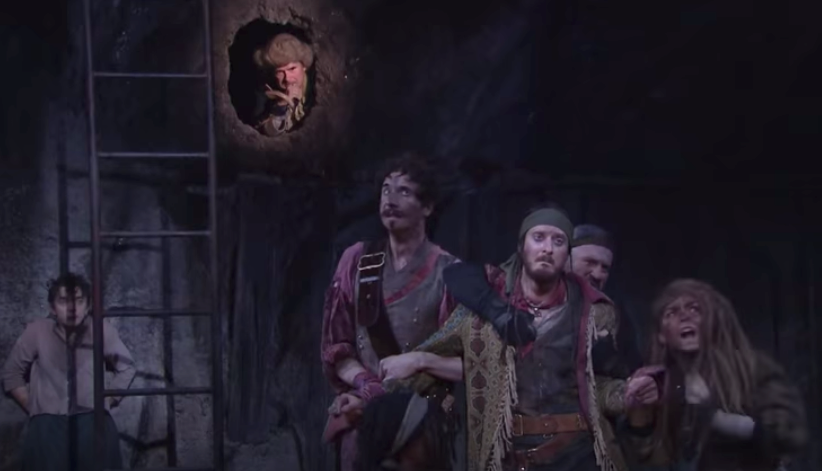

A slapdash crew is assembled. Gathering at the harbor to introduce themselves to a suspicious captain, a cluster of four, idle, would be pirates stand side-by-side. One at a time, they step forward offering a clever piece of self description. The large Red Ruth says “all this sea airs given me a rare appetite..” Lucky Mickey steps forward “A seagull just s*** on my head… luckiest man in the whole wide world!” He smiles and puts his hands on his hips. Job Anderson, “My misses says no drinking grog…” and Silent Sue mugs a tense grin and says nothing. Although entertaining, each moment happens in a void. Each statement is without desire for anyone to receive information; spoken out to the general wind like students during a high school presentation.
Polly Findlay conducts this bold, expansive undertaking and despite disappointing acting work, Treasure Island’s story is told with clarity, respect and contains enough spectacle to impress and entertain just about anyone. Certainly, she should be commended for her astonishing ability to juggle so many elements even if one very important element was mishandled.
In the beginning, a grandmother easily lifts a large treasure chest and we imagine the riches within. By the end, we realize the treasure inside is less fulfilling than we had imagined. Spectacle. Now a month into our COVID daze, we are forced into refining our relationship to substance. Substance in family and friendship and how we use our time. Treasure Island is an example of what money and producers can accomplish in entertainment theatre. Comparing last week’s Jane Eyre to this week’s Treasure Island, we see the difference between meaningful art, with all its components working to accomplish a piece aiming to elevate humanity, and entertainment- glitzy, astronomically expensive, jaw dropping impressive entertainment. But ultimately like the easily lifted chest, empty.
The National Theatre’s production of Treasure Island. 1 hour 50 minutes with a very brief intermission. Streaming free on YouTube through April 23.



